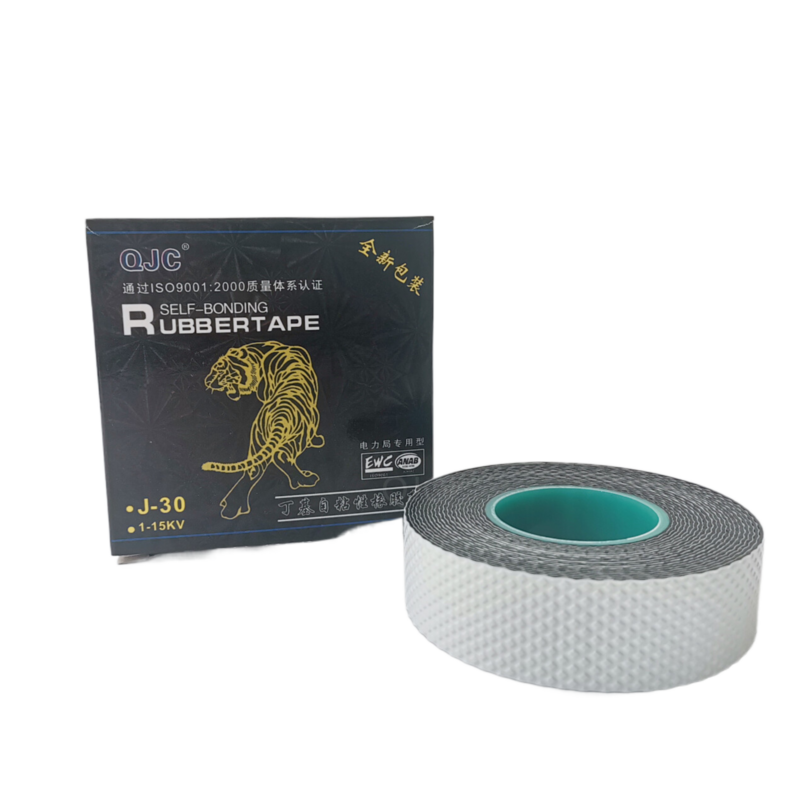Electrical Rubber Splicing Tape A Comprehensive Overview
Electrical rubber splicing tape is an essential tool in the electrical and telecommunications industries, renowned for its ability to provide reliable insulation and protection for electrical connections. This versatile tape is specifically designed to insulate and protect spliced electrical wires, ensuring safety and longevity in various applications.
Composition and Properties
Electrical rubber splicing tape is typically made from a blend of rubber and other insulating materials, which endow it with excellent elasticity and adhesion properties. The tape is usually self-fusing, meaning it can bond to itself without the need for adhesives, making it ideal for various applications where a strong, waterproof seal is required. It is resistant to moisture, chemicals, and UV radiation, further enhancing its durability and reliability in challenging environments.
One of the key characteristics of this tape is its high dielectric strength, which allows it to withstand significant electrical stress without breakdown. This makes it suitable not only for low voltage applications but also for medium voltage splices, ensuring that electrical systems remain safe and efficient. The tape can typically handle temperatures ranging from -20°C to 90°C (-4°F to 194°F), allowing it to be used in both indoor and outdoor settings.
Applications
The applications of electrical rubber splicing tape are vast and varied. It is widely used in the electrical industry for splicing, insulating, and sealing electrical connections. This includes the repair of damaged cables, the insulation of wire splices, and the bundling of wires for improved organization and protection. Its self-fusing properties make it particularly effective for securing connections without the bulk of traditional tape or connectors.
electrical rubber splicing tape

In telecommunications, the tape is often utilized for protecting and insulating coaxial and other specialized cables from environmental factors such as moisture and temperature fluctuations. This is crucial for maintaining signal integrity and performance in communication systems. Additionally, the automotive industry employs electrical rubber splicing tape for wiring harness repairs and insulation of electrical connections, ensuring that vehicles operate safely and efficiently.
Installation Tips
To ensure the best performance from electrical rubber splicing tape, proper installation techniques are essential. Users should begin by cleaning the area of application to remove any dirt, grease, or moisture. This will promote better adhesion and longevity of the splice. When wrapping the tape around the wire or connection, it is recommended to stretch the tape slightly for enhanced bonding. Overlapping the tape by approximately half its width will provide an effective seal and insulation.
It’s also important to note that while electrical rubber splicing tape is designed for high performance, it should not be used as a primary insulation material for high voltage applications. Instead, it should serve as a supplementary solution or as part of a larger insulation system to ensure maximum safety and efficacy.
Conclusion
In conclusion, electrical rubber splicing tape is an invaluable resource in the electrical and telecommunications industries. Its unique properties, including self-fusing capabilities, high dielectric strength, and resistance to various environmental factors, make it a preferred choice for a wide range of applications. By following proper installation techniques, users can ensure the reliability and safety of their electrical systems, ultimately contributing to the efficiency and functionality of the technology that powers our world. Whether for industrial, commercial, or residential use, electrical rubber splicing tape continues to play a crucial role in modern electrical connectivity.
-
XIANGFAN Rubber Tape-Ultimate Solutions for All Your Insulation NeedsNewsJun.24,2025
-
XIANGFAN Rubber Tape-Protection for Industrial and Residential ApplicationsNewsJun.24,2025
-
XIANGFAN Rubber Tape: Superior Safety and Sealing for Demanding EnvironmentsNewsJun.24,2025
-
XIANGFAN Rubber Tape: Reliable Solutions for Every Electrical ChallengeNewsJun.24,2025
-
XIANGFAN Electrical & Industrial Tape: Powering Reliability Across IndustriesNewsJun.24,2025
-
XIANGFAN Electrical & Industrial Tape: Excellence in Every ApplicationNewsJun.24,2025
